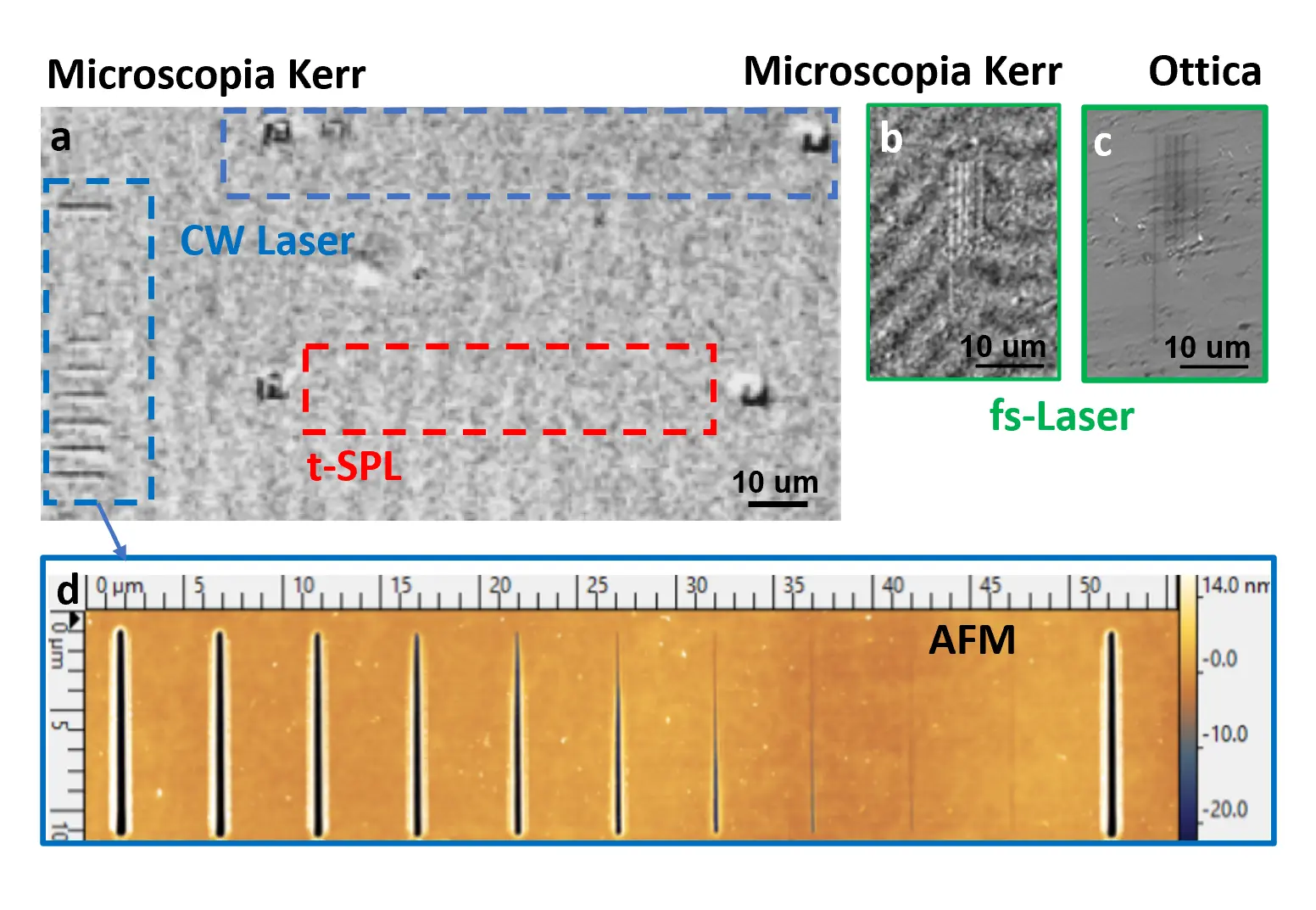Start
09/12/2022
End
08/12/2027
Status
In progress
NAMASTE
Website's ProjectStart
09/12/2022
End
08/12/2027
Status
In progress
NAMASTE
Website's Project
NAnostructuring MAgnetism in crySTalline matErials
Magnetic crystals represent some of the most interesting classes of materials due to their extremely rich physics and potential for technological applications. Among these, magnetic oxides such as the prototypic ferrimagnetic Yttrium Iron Garnet (YIG), Tm3Fe5O12 (TmFO) and Tb3Fe5O12 (TbFO) have recently attracted renewed attention, due to their exceptional magnetic properties which allow long-distance spin transport and processing of information on-chip using spin waves, and fast magnetic domain wall motion. For these reasons, magnetic crystals are regarded as some of the most promising materials for the design of low-power dissipation beyond-CMOS computing architectures.
In this view, micro- and nanofabrication, i.e. the ability to craft new artificial materials and devices with a spatial precision down to the nanoscale, represents a crucial step, allowing to craft specific device functionalities harnessing the physical phenomena harbored in the raw materials. So far, nanopatterning of magnetic crystals has been mostly limited to planar micro structures obtained by masking via optical/electron beam lithography, and subsequently removing the unmasked material. Going down towards the nanoscale has proven extremely challenging, due to the constraints imposed by applying conventional fabrication techniques to such complex materials. Interestingly, a crucial common element to all magnetic oxides, is the fact that their unique properties are inextricably linked with their crystalline phase and to the concentration and type of defects.
NAMASTE aims to demonstrate a groundbreaking new methodology, called “phase-nanoengineering” for nanostructuring magnetic crystalline materials, by directly manipulating the magnetic properties with extreme sub-10 nm spatial resolution, via highly localized and tunable thermal reactions.
The first objective is the demonstration of a novel direct-write methodology, based on the combination of the recently developed thermally assisted scanning probe lithography, and laser writing, specifically optimized for magnetic crystals. Then, the technique is applied to the creation of novel artificial magnetic nanomaterials with finely tuned magnetic properties. Finally, the project will focus on the realization of a new class of “phase-engineered” nanodevices for spintronics and magnonics.
The goals of NAMASTE are in synergy with my ERC Project, allowing to extend, optimize and apply the new “phase-nanoengineering” concept to a whole new class of materials and properties. Together, the synergy and exchange between the two projects will allow the realization of a new class of nanomaterials and devices for nanoelectronics, spintronics and magnonics.
Publications
- Girardi, Davide, D. Petti, and E. Albisetti. "Magnetic properties of thick synthetic antiferromagnets with different ferromagnetic layers." IL NUOVO CIMENTO C 46.4 (2023): 1-4.
- Giacco, Andrea Del, et al. "Patterning Magnonic Structures via Laser Induced Crystallization of Yittrium Iron Garnet." Advanced Functional Materials 34.36 (2024): 2401129.
- Levati, Valerio, et al. "Phase Nanoengineering via Thermal scanning probe lithography and direct laser writing." Advanced Materials Technologies 8.16 (2023): 2300166.
- Tacchi, Silvia, et al. "Experimental observation of flat bands in one-dimensional chiral magnonic crystals." Nano Letters 23.14 (2023): 6776-6783.
- Girardi, Davide, et al. "Three-dimensional spin-wave dynamics, localization and interference in a synthetic antiferromagnet." Nature Communications 15.1 (2024): 3057.